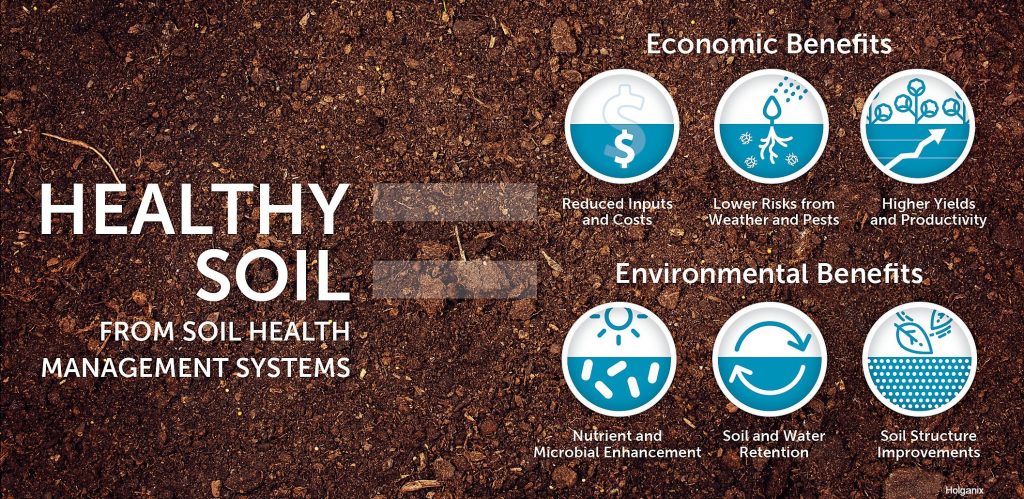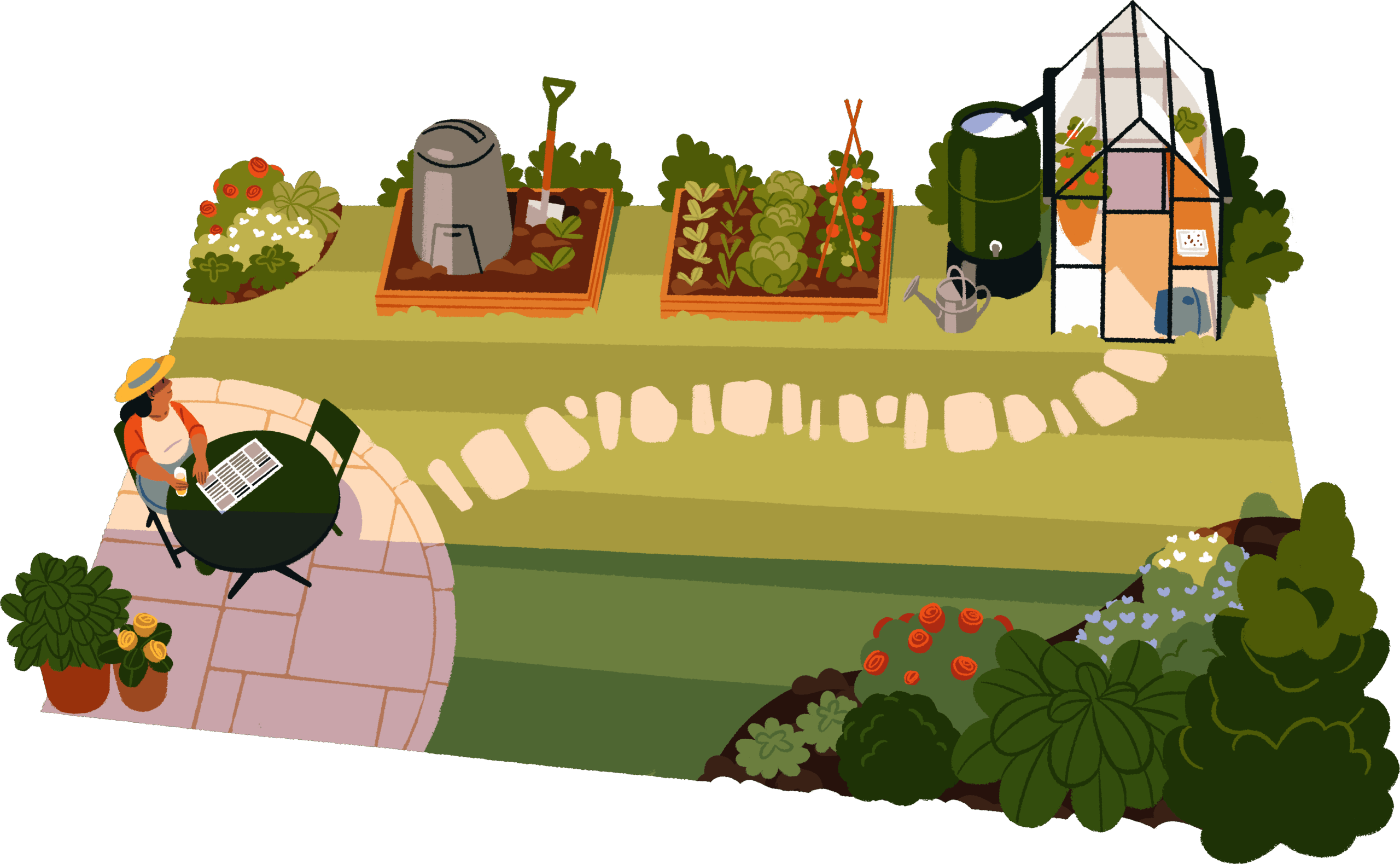
Unlocking the Secrets of Soil: Strategies for Dramatic Health Improvement and a Thriving Ecosystem
The earth beneath our feet, often taken for granted, is far more than just a collection of dirt. It’s a vibrant, complex ecosystem teeming with life – a life that directly impacts the health of our planet, the productivity of our farms, and ultimately, our own well-being. Soil health, the very foundation upon which we build our world, is a critical factor in everything from food security to climate change mitigation. Unfortunately, decades of unsustainable agricultural practices, urbanization, and neglect have taken a toll on this precious resource. But the good news is, we can reverse this trend. By understanding the principles of soil health and implementing effective improvement strategies, we can revitalize our soils, create more resilient ecosystems, and secure a healthier future for generations to come.
The Significance of Soil Health: Why It Matters More Than You Think
Before diving into the strategies for improvement, let’s explore why soil health is so profoundly important. Think of it as the engine of a thriving ecosystem. Healthy soil is much more than just a medium for plant growth; it’s a dynamic living system that performs a multitude of essential functions:
- Food Production: Healthy soil provides the essential nutrients, water retention, and structural support that plants need to flourish, leading to higher yields and more nutritious crops.
- Water Filtration and Purification: Soil acts as a natural filter, purifying water as it percolates through the layers. Healthy soil enhances this process, removing pollutants and contaminants.
- Carbon Sequestration: Soil is a massive carbon sink. Healthy soil can capture and store significant amounts of atmospheric carbon, helping to mitigate climate change.
- Biodiversity: Healthy soil teems with life, from microscopic bacteria and fungi to earthworms and insects. This biodiversity is essential for nutrient cycling, pest control, and overall ecosystem resilience.
- Erosion Control: Healthy soil has a strong structure that resists erosion from wind and water, protecting valuable topsoil and preventing sedimentation of waterways.
- Resilience to Climate Change: Healthy soil is more resilient to the impacts of climate change, such as drought and flooding. It can absorb and retain more water during dry periods and drain excess water during heavy rainfall.
In essence, healthy soil is the cornerstone of a healthy planet. When soil health declines, these vital functions are compromised, leading to a cascade of negative consequences. This is why understanding and implementing soil health improvement strategies is not just important; it’s absolutely crucial.
Identifying the Symptoms of Unhealthy Soil
Just like a human body, unhealthy soil exhibits telltale signs that something is amiss. Recognizing these symptoms is the first step toward implementing effective solutions. Here are some key indicators of soil health problems:
- Compaction: Soil that is compacted is dense and lacks air spaces, making it difficult for roots to penetrate and for water to infiltrate. This can be caused by heavy machinery, excessive foot traffic, or the loss of organic matter.
- Erosion: Soil erosion is the loss of topsoil due to wind or water. It’s often visible as rills, gullies, or sediment in waterways.
- Poor Water Infiltration and Drainage: Water either pools on the surface or runs off quickly, rather than soaking into the soil. This indicates a lack of pore space and poor soil structure.
- Crusting: A hard, crusty layer forms on the soil surface, preventing seedling emergence and reducing water infiltration.
- Nutrient Deficiencies: Plants show signs of nutrient deficiencies, such as yellowing leaves (chlorosis), stunted growth, or unusual coloration.
- Low Organic Matter: The soil lacks the dark, crumbly appearance and rich smell of healthy soil. This indicates a deficiency in organic matter, which is essential for soil structure, water retention, and nutrient availability.
- Pest and Disease Problems: Increased susceptibility to pests and diseases, often due to a weakened plant immune system resulting from poor soil health.
- Reduced Biological Activity: Few earthworms, insects, or other visible signs of life in the soil. This indicates a decline in the soil’s biological activity, which is crucial for nutrient cycling and decomposition.
If you observe any of these symptoms in your soil, it’s a clear indication that it needs attention. Fortunately, there are numerous strategies you can employ to restore and enhance soil health.
Soil Health Improvement Strategies: A Comprehensive Guide
Now, let’s delve into the practical strategies you can implement to improve the health of your soil. These strategies are interconnected and work synergistically to create a thriving soil ecosystem. Remember, the best approach often involves a combination of these techniques, tailored to your specific soil type, climate, and land-use practices.
1. Build Organic Matter: The Foundation of Soil Health
Organic matter is the lifeblood of healthy soil. It’s the decomposed remains of plants and animals, and it plays a crucial role in soil structure, water retention, nutrient availability, and biological activity. Increasing organic matter is perhaps the single most important thing you can do to improve soil health.
Here are several ways to build organic matter:
- Composting: Composting is the process of decomposing organic materials, such as food scraps, yard waste, and manure, into a nutrient-rich soil amendment. It’s a fantastic way to recycle organic waste and provide valuable nutrients to your soil.
- Cover Cropping: Cover crops are plants grown specifically to improve soil health, rather than for harvest. They can add organic matter, suppress weeds, prevent erosion, and improve nutrient cycling. Popular cover crops include legumes (which fix nitrogen), grasses, and brassicas.
- Mulching: Applying a layer of organic material, such as straw, wood chips, or compost, to the soil surface. Mulch helps retain moisture, suppress weeds, regulate soil temperature, and add organic matter as it decomposes.
- Adding Compost and Other Organic Amendments: Regularly incorporating compost, manure, or other organic amendments into the soil. These materials provide a direct boost of organic matter and essential nutrients.
- No-Till Farming: Minimizing or eliminating tillage (plowing, disking) helps preserve organic matter by reducing soil disturbance and erosion.
2. Minimize Soil Disturbance: Protect the Soil Structure
Soil disturbance, such as tillage, can disrupt the soil structure, reduce organic matter, and harm beneficial soil organisms. Minimizing soil disturbance is essential for maintaining healthy soil.
Here are some strategies to minimize soil disturbance:
- No-Till Farming: As mentioned earlier, this is a highly effective way to reduce soil disturbance.
- Reduced Tillage: If completely eliminating tillage isn’t feasible, consider reducing the frequency and intensity of tillage operations.
- Controlled Traffic: Using designated pathways for machinery and vehicles to avoid compacting the entire field or garden.
- Proper Crop Rotation: Rotating crops helps break up pest and disease cycles, reducing the need for tillage to manage these problems.
3. Diversify Crop Rotations: Promote Biodiversity
Monoculture (growing the same crop year after year) depletes soil nutrients, increases pest and disease problems, and reduces biodiversity. Diversifying crop rotations is a key strategy for improving soil health and promoting a more resilient ecosystem.
Here’s how to diversify crop rotations:
- Rotate Crops: Alternate between different crop families (e.g., legumes, grasses, brassicas, root crops) to utilize different nutrients, break up pest and disease cycles, and add organic matter.
- Include Cover Crops: Integrate cover crops into your rotation to add organic matter, suppress weeds, and improve nutrient cycling.
- Consider Companion Planting: In gardens, plant different crops together that benefit each other.
4. Keep the Soil Covered: Protect from the Elements
Exposed soil is vulnerable to erosion, compaction, and the effects of extreme temperatures. Keeping the soil covered helps protect it from the elements and promotes healthy soil conditions.
Here’s how to keep the soil covered:
- Mulching: As mentioned previously, mulching is an excellent way to cover the soil surface.
- Cover Cropping: Cover crops provide a living cover for the soil.
- No-Till Farming: The residue from previous crops remains on the soil surface, providing a protective cover.
- Reduce Bare Fallow Periods: Minimize the time the soil is left bare between crops.
5. Manage Nutrients Effectively: Balance is Key
Proper nutrient management is essential for plant health and soil health. Over-fertilizing can lead to nutrient imbalances, water pollution, and soil degradation. Under-fertilizing can lead to nutrient deficiencies and reduced crop yields.
Here’s how to manage nutrients effectively:
- Soil Testing: Regularly test your soil to determine nutrient levels and identify any deficiencies or excesses.
- Apply Nutrients Based on Soil Test Results: Use the results of your soil tests to determine the appropriate amount and type of fertilizer to apply.
- Use Organic Amendments: Incorporate compost, manure, and other organic amendments to provide a slow-release source of nutrients and improve soil health.
- Consider Cover Crops: Legume cover crops can fix atmospheric nitrogen, reducing the need for synthetic nitrogen fertilizers.
- Practice Integrated Pest Management (IPM): IPM can reduce the need for pesticides, which can harm beneficial soil organisms.
6. Promote Biological Activity: Cultivate the Soil Ecosystem
Healthy soil teems with life, from microscopic bacteria and fungi to earthworms and insects. Promoting biological activity is essential for nutrient cycling, decomposition, and overall soil health.
Here’s how to encourage biological activity:
- Add Organic Matter: Organic matter provides food and habitat for soil organisms.
- Minimize Soil Disturbance: Soil disturbance can harm beneficial soil organisms.
- Avoid Overuse of Pesticides and Herbicides: These chemicals can kill beneficial soil organisms.
- Use Cover Crops: Cover crops provide habitat and food for soil organisms.
- Incorporate Compost and Other Organic Amendments: These materials introduce beneficial microorganisms into the soil.
7. Control Pests and Diseases: Protect Plant Health
Healthy plants are less susceptible to pests and diseases, and healthy soil supports healthy plants. Effective pest and disease management is an important component of soil health management.
Here’s how to control pests and diseases:
- Practice Crop Rotation: Rotating crops can break up pest and disease cycles.
- Use Resistant Varieties: Choose crop varieties that are resistant to common pests and diseases.
- Practice Integrated Pest Management (IPM): IPM uses a combination of strategies to control pests and diseases, including cultural practices, biological control, and targeted pesticide applications.
- Maintain Healthy Soil: Healthy soil supports healthy plants, which are less susceptible to pests and diseases.
Implementing Soil Health Strategies in Different Contexts
The specific strategies you choose to implement will depend on your context: your type of land use, your climate, and your resources. Here are some considerations for different situations:
Agricultural Lands
For farmers, soil health is directly linked to profitability and sustainability. Implementing soil health practices can lead to increased yields, reduced input costs (fertilizers, pesticides), and improved resilience to climate change. Key strategies include:
- No-Till Farming: Reduce or eliminate tillage to improve soil structure and organic matter.
- Cover Cropping: Use cover crops to add organic matter, suppress weeds, and improve nutrient cycling.
- Crop Rotation: Rotate crops to break up pest and disease cycles.
- Composting and Manure Management: Utilize compost and manure to add organic matter and nutrients.
- Precision Agriculture: Use technology to optimize fertilizer and water application.
Gardens and Home Landscapes
Even in small-scale gardens, soil health is crucial for plant health and productivity. Soil health practices can improve the beauty and productivity of your garden. Consider these strategies:
- Composting: Create and use compost to add organic matter and nutrients.
- Mulching: Apply mulch to retain moisture, suppress weeds, and add organic matter.
- Cover Cropping: Use cover crops in fallow areas.
- Raised Beds: Build raised beds to improve drainage and soil conditions.
- Avoid Compaction: Minimize foot traffic on garden beds.
Urban Environments
In urban settings, soil health is often overlooked, but it’s just as important. Improving soil health in urban areas can help manage stormwater, reduce pollution, and create more sustainable green spaces. Key strategies include:
- Composting: Use compost in gardens, parks, and green spaces.
- Green Infrastructure: Implement green roofs, rain gardens, and other green infrastructure to improve soil health and manage stormwater.
- Reduce Impervious Surfaces: Reduce the amount of concrete and asphalt to allow for better water infiltration.
- Urban Forestry: Plant trees to improve soil health and provide shade.
Restoration Projects
In areas that have suffered from soil degradation, such as those impacted by mining or construction, soil health restoration is critical. Restoration projects often involve:
- Soil Testing and Assessment: Evaluate the soil’s condition and identify the specific challenges.
- Amendments: Apply organic amendments, such as compost and biochar, to improve soil structure and fertility.
- Revegetation: Plant native plants to stabilize the soil and improve biodiversity.
- Erosion Control: Implement erosion control measures, such as terracing and contouring.
Monitoring and Assessing Soil Health: Tracking Your Progress
Implementing soil health improvement strategies is an ongoing process. It’s important to regularly monitor and assess the health of your soil to track your progress and make adjustments as needed. Here are some methods for monitoring soil health:
- Visual Assessment: Observe the soil’s appearance, structure, and the presence of earthworms and other organisms.
- Soil Tests: Conduct soil tests to measure nutrient levels, organic matter, pH, and other important parameters.
- Infiltration Tests: Measure the rate at which water infiltrates the soil.
- Penetration Tests: Assess the soil’s compaction by measuring the resistance to a probe.
- Plant Growth Observations: Monitor plant health, growth, and yield.
- Earthworm Counts: Count the number of earthworms in your soil, as they are a good indicator of soil health.
By regularly monitoring your soil, you can identify any problems early on and make adjustments to your management practices. This will help you ensure that your soil health improvement strategies are effective and sustainable.
Overcoming Challenges and Embracing the Future of Soil Health
Improving soil health is not always easy. There may be challenges to overcome, such as:
- Initial Investment: Some soil health practices, such as cover cropping and no-till farming, may require an initial investment in equipment or materials.
- Time Commitment: Implementing soil health practices can require more time and effort than conventional practices.
- Knowledge Gap: There may be a learning curve associated with implementing new soil health practices.
- Climate Variability: Climate change can make it more difficult to manage soil health, as extreme weather events can damage soil structure and reduce yields.
However, the benefits of soil health far outweigh the challenges. As we become more aware of the importance of soil health, more resources and support are becoming available to help farmers, gardeners, and landowners implement these practices. Government programs, research institutions, and non-profit organizations are all working to promote soil health and provide technical assistance.
The future of soil health is bright. As we continue to learn more about the complex interactions within the soil ecosystem, we will develop even more effective strategies for improving soil health and creating a more sustainable future. By embracing these strategies, we can:
- Increase Food Production: Healthy soil leads to higher yields and more nutritious crops.
- Mitigate Climate Change: Healthy soil sequesters carbon, reducing greenhouse gas emissions.
- Improve Water Quality: Healthy soil filters and purifies water.
- Enhance Biodiversity: Healthy soil supports a diverse range of plant and animal life.
- Build Resilience to Climate Change: Healthy soil is more resilient to extreme weather events.
- Create a Healthier Planet: Healthy soil is the foundation of a healthy planet and a more sustainable future.
The journey to healthy soil is a journey worth taking. It’s a journey that will benefit not only our farms and gardens but also our planet and future generations. By understanding the principles of soil health and implementing effective improvement strategies, we can unlock the secrets of the soil and create a more resilient, productive, and sustainable world.



